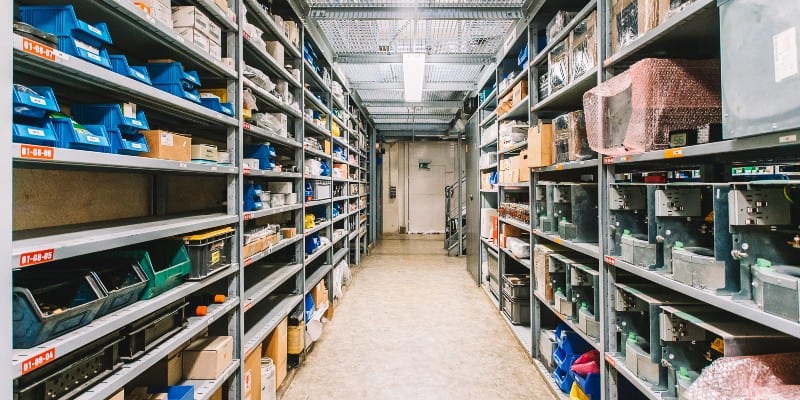With carrying costs alone amounting to 40% of yearly organizational revenue, there is no dispute that poorly managed storerooms can be a major financial drain. However, many companies don’t consider the impact of inadequate maintenance spares management, which in itself can become a significant issue. Poor spares management leads to excessive inventory expenses and can increase unplanned equipment downtime.
In this article, we drill into some approaches and strategies that help business leaders identify these costs and minimize them with the help of technology-driven insight such as a computerized maintenance management system (CMMS). These figures are applicable to any business that maintains spare parts, regardless of industry.
Cost Avoidance Begins with Cost Awareness
To identify the savings most easily, leadership needs to know how much they are already spending on spares, each year. Calculating this can require some hard investigation, because it must include “private” or “pirate” spares stores held by various employees or crews. It should also include items that were purchased but unused within the expected operating cycle and were placed into long-term storage (aka graveyards or bone yards).
Additionally, if the inventory and stores functions aren’t well organized, spare parts may be available but not easy to locate. This results in spares already in inventory being unnecessarily purchased again. All these issues result in significant “inventory creep” which is easily twice the value of spares purchased yearly. For example, a company that purchases $50,000 of maintenance spares each year but doesn’t have accurate insight into and management of these items could easily be holding $100,000 of excess spares inventory.
When Too Much Becomes Too Little
Ironically, companies with bloated spares inventories can find themselves understocked, at least on paper. Stockroom staff either cannot find spares that are available, or inaccurate inventory counts result in important spares not being reordered on a timely basis. In either instance, stock-outs may result, which impacts facility operations.
To calculate that impact, here’s an example. In our experience working to help companies better manage their spares through technology, poorly run storerooms can experience stock-outs as often as 40% of the time. If a maintenance team requests an average of 12 spare parts per day in a company with a full-time production schedule (365 days a year), a 40% stock-out rate would result in 1752 stock-outs instances over a one-year period.
Furthermore, service levels tend to fall at a rate that is almost exactly inverse to the number of stock-outs. Therefore, if the stock-out rate were 40%, service levels could fall into the 60% range. If optimal stores service is 8 hours per day, a 60% service rate would mean adequate service was being provided fewer than 5 hours per day. Those issues would have a considerable negative impact on maintenance activities, almost certainly leading to downtime.
Minimizing the Killer Expense: Downtime
Although the hard-dollar costs inherent in disorganized or inappropriately stocked maintenance spares inventories are noteworthy, they pale in comparison with the cost of downtime. If leadership knows their hourly downtime costs, they can determine a 100% accurate number. For this example, we used the industry average for downtime, which $260,000 per hour, and made a few calculations. If a firm is losing three hours of productivity due to stock-outs every day, materials-related downtime could cost the average large facility nearly $780,000 daily, which equates to $3.8 million per week.
With financial drains this significant, it may be hard to comprehend why organizational leadership isn’t already addressing them. The answer is lack of awareness. Per a survey conducted by technology market research firm Vanson Bourne, 70% of business leaders lack overall awareness regarding their equipment assets, including maintenance schedules and/or considerations such as spare parts management.
Fortunately, there is good news. the vast majority of these losses can be avoided with the granular oversight and robust management provided by a CMMS. To explore what a centralized CMMS package can do for your firm, please call us at (866) 818-8376. For a preview of the many features you can leverage with a best-practices CMMS, visit https://azzier.com/features/maintenance-management.




